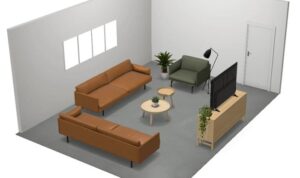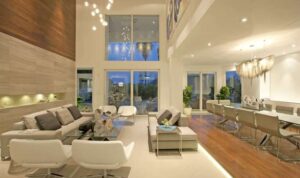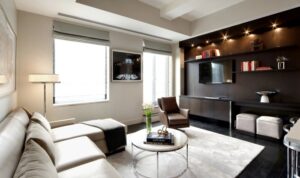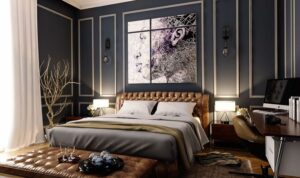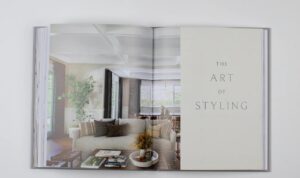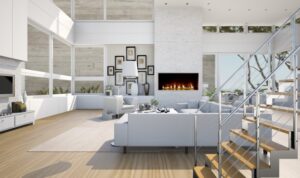Delving into the world of interior design and decoration, this captivating introduction aims to provide a glimpse into the creative and impactful realm that shapes our living and working spaces.
Exploring the essential elements, popular styles, trends, and budget-friendly tips, this article is a comprehensive guide for anyone looking to revamp their surroundings.
Importance of Interior Design and Decoration
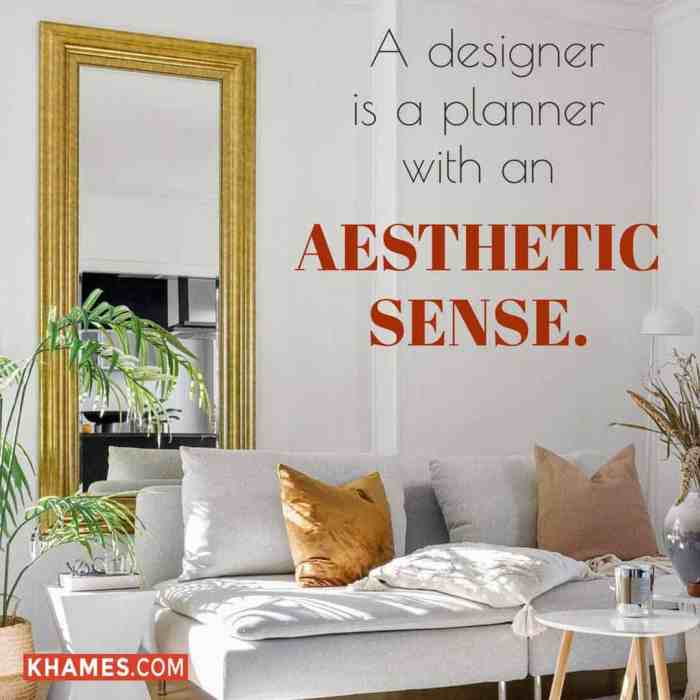
Interior design plays a crucial role in shaping the atmosphere and functionality of a living or working space. It goes beyond just aesthetics, as it involves creating a harmonious environment that enhances the overall quality of life.
Interior decoration has the power to influence our mood, emotions, and productivity. A well-designed space can evoke feelings of calmness, creativity, or even motivation, depending on the chosen elements and layout.
Famous Interior Design Styles and Characteristics
- Minimalist: Characterized by simplicity, clean lines, and a focus on functionality. Minimalist interiors often feature neutral colors and uncluttered spaces.
- Industrial: Inspired by urban lofts and warehouses, industrial design incorporates raw materials like exposed brick, metal, and concrete. It embraces a rugged and unfinished look.
- Scandinavian: Known for its light, airy feel, Scandinavian design emphasizes simplicity, natural elements, and a cozy ambiance. It often includes warm woods, soft textiles, and a neutral color palette.
- Art Deco: A glamorous style from the 1920s and 1930s, Art Deco is characterized by luxurious materials, geometric patterns, and bold colors. It exudes sophistication and elegance.
Elements of Interior Design
Interior design encompasses various elements that work together to create cohesive and aesthetically pleasing spaces. Key elements include color, lighting, furniture, accessories, textures, patterns, and spatial arrangement.
Color
Color plays a crucial role in setting the mood and atmosphere of a room. Different colors evoke different emotions and can affect how spacious or cozy a space feels. It is essential to choose colors that complement each other and the overall design concept.
Lighting
Lighting is not only functional but also contributes to the ambiance of a room. Proper lighting can highlight architectural features, create focal points, and enhance the overall design. Natural light, artificial light, and accent lighting all play a role in interior design.
Furniture and Accessories
Furniture and accessories are essential elements that add functionality and personality to a space. The right furniture pieces can define the style of a room, while accessories like artwork, rugs, and decor items can tie everything together and add visual interest.
Textures and Patterns
Textures and patterns add depth and dimension to a room. They create visual interest and can be used to balance out different elements within a space. Mixing textures and patterns effectively can add richness and character to the design.
Spatial Arrangement
Spatial arrangement involves the layout and placement of furniture, decor, and other elements within a room. It is crucial to consider flow, functionality, and balance when arranging the space to ensure optimal use of the area and create a harmonious environment.
Popular Interior Design Styles
When it comes to interior design, there are several popular styles that people often choose to decorate their spaces. Each style has its own unique characteristics and elements that set it apart from the others.
Modern Interior Design
Modern interior design is characterized by clean lines, simple color palettes, and a focus on functionality. To achieve a modern look, incorporate sleek furniture, minimalistic decor, and plenty of natural light into your space.
Minimalist Interior Design
Minimalist interior design follows the principle of "less is more," with a focus on simplicity and organization. To create a minimalist space, opt for neutral colors, clutter-free surfaces, and furniture with clean and sleek designs.
Traditional Interior Design
Traditional interior design is known for its classic and timeless appeal, with a focus on ornate details and rich colors. To achieve a traditional look, incorporate antique furniture, elegant fabrics, and decorative elements like crown molding and wainscoting.
Eclectic Interior Design
Eclectic interior design is all about mixing different styles, textures, and periods to create a unique and personalized space. To achieve an eclectic look, mix and match furniture pieces, experiment with bold colors and patterns, and showcase your personal style through decor items and artwork.
Interior Design Trends
Keeping up with the latest interior design trends is essential for creating modern and stylish living spaces. Let's explore some of the current trends shaping the world of interior design and decoration.
Innovative Materials and Technologies
Interior design trends are increasingly incorporating innovative materials and technologies to enhance the functionality and aesthetics of spaces. From smart home systems to sustainable building materials, these advancements are revolutionizing the way we design our interiors.
- Smart Home Systems: Integration of technology to control lighting, temperature, security, and entertainment systems.
- Biophilic Design: Incorporating natural elements like plants and green walls to create a connection with nature.
- 3D Printing: Customized furniture and decor pieces created using 3D printing technology for unique designs.
Sustainable Practices and Eco-Friendly Options
As awareness of environmental sustainability grows, interior design trends are leaning towards eco-friendly options and sustainable practices. Designers are increasingly using materials that are renewable, recyclable, and energy-efficient.
- Recycled Materials: Incorporation of recycled materials like reclaimed wood, metal, and glass in furniture and decor.
- Energy-Efficient Lighting: Use of LED lighting and smart lighting systems to reduce energy consumption.
- Solar Panels: Integration of solar panels to harness renewable energy for powering homes and reducing carbon footprint.
Budget-Friendly Interior Design Tips
Decorating on a budget doesn't mean compromising on style. With some creativity and resourcefulness, you can transform your space without breaking the bank. Here are some budget-friendly interior design tips to help you enhance the aesthetics of your home inexpensively.
Repurpose Existing Items
One of the best ways to save money on interior design is to repurpose items you already have. Consider giving old furniture a fresh coat of paint, repurposing jars and containers as decorative pieces, or using leftover fabric for DIY cushion covers.
DIY Wall Art
Instead of buying expensive artwork, get creative and make your own wall art. You can frame interesting fabrics, create a gallery wall with personal photos, or even paint your own abstract pieces. Not only will this add a personal touch to your space, but it will also save you money.
Thrift Shopping
Explore thrift stores and flea markets for unique finds at a fraction of the cost. You can discover vintage pieces, quirky decor items, and even furniture that can be easily refurbished to fit your style. Thrift shopping is a great way to add character to your space without spending a fortune.
Closing Summary
In conclusion, interior design and decoration offer endless opportunities to transform spaces into personalized havens of style and functionality. Whether embracing modern minimalism or traditional elegance, the key lies in creating a space that resonates with individual tastes and preferences.
Dive into the world of interior design and let your creativity run wild!
FAQ Explained
How does interior design impact mood and productivity?
Interior design can affect mood and productivity by creating spaces that are visually appealing, functional, and tailored to individual needs. Colors, lighting, and layout play crucial roles in influencing emotions and enhancing work efficiency.
What are some budget-friendly interior design tips?
Budget-friendly interior design tips include repurposing existing items, DIY projects, and shopping smartly for affordable decor pieces. Creativity and resourcefulness can go a long way in transforming a space without breaking the bank.

